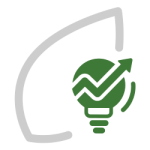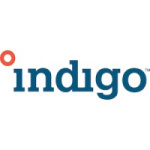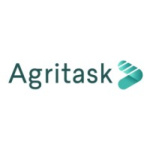Sustainable Agriculture Software: A Practical Guide for Farmers and Agribusinesses
Sustainable Agriculture Software is changing the way farms and agribusinesses operate, helping manage resources responsibly while improving yields. From soil health to water usage and crop tracking, this software is designed to support sustainable farming practices, allowing farmers to monitor environmental impact, optimise processes, and ultimately, boost productivity.
Why Invest in Sustainable Agriculture Software?
Farming sustainably isn’t just about doing right by the planet; it’s also good for business. Sustainable Agriculture Software provides data and insights that help farmers make more informed decisions, reducing waste, conserving resources, and enhancing long-term productivity. As consumers become more aware of sustainability, farmers with strong environmental practices are positioned to appeal to a growing market of eco-conscious buyers.
Who Uses Sustainable Agriculture Software?
The software is valuable to anyone involved in agricultural management and environmental stewardship, including:
Farmers and Growers monitoring soil health, water usage, and crop yields.
Agricultural Consultants providing guidance on sustainable practices.
Agribusiness Managers overseeing resources and tracking productivity across multiple sites.
Supply Chain Managers ensuring traceability and sustainable sourcing.
Environmental Compliance Officers focused on meeting sustainability standards and regulations.
Core Features to Consider
Soil Health Monitoring: Tracks nutrients, moisture, and overall soil quality, helping farmers maintain healthy, productive soil without overusing fertilisers.
Water Management Tools: Water conservation is key in sustainable farming. Tools that monitor irrigation, rainfall, and moisture levels help optimise water usage and reduce waste.
Crop Planning and Rotation: Supports effective crop rotation and planning strategies, which are essential for maintaining soil fertility and reducing the need for chemical inputs.
Pest and Disease Tracking: Early detection of pest or disease issues enables farmers to take timely, targeted action, minimising chemical use.
Supply Chain Traceability: Ensures that crops are tracked from farm to market, adding transparency to the supply chain and building trust with consumers.
Carbon and Emissions Tracking: For farmers focused on reducing greenhouse gas emissions, some software includes carbon tracking tools to monitor and reduce emissions from farming activities.
Benefits of Using Sustainable Agriculture Software
Better soil and water management means less waste and fewer inputs, lowering costs and promoting long-term land health.
Sustainable practices improve soil quality, which in turn supports healthier, more productive crops.
Many farmers are now subject to regulations regarding emissions and resource use, and this software can streamline compliance.
Farmers practising sustainable methods can appeal to eco-conscious markets, often gaining access to certifications that improve their market standing.
With data-driven insights, farmers can optimise processes, streamline labour, and make smarter, timely decisions.
Current Trends in Sustainable Agriculture Software
Precision Agriculture and IoT: With precision agriculture tools, farmers can track field data down to the square metre. Sensors placed in the field deliver real-time insights on soil, moisture, and weather conditions, making it easier to apply resources exactly where needed.
Blockchain for Traceability: Blockchain technology is being used to add transparency to the supply chain, creating a record of each step in a crop’s journey from farm to table. This level of traceability can be a significant selling point for consumers and retailers interested in sustainability.
Remote Sensing and Drones: Many platforms now integrate drone and satellite imagery to provide a bird’s-eye view of crop health, water distribution, and land conditions. This technology allows farmers to see problems early on, catch issues before they escalate, and improve yields.
Carbon Farming Initiatives: Carbon tracking is becoming more prevalent, allowing farmers to monitor their carbon footprint and, in some cases, even generate revenue through carbon credits for sustainable practices.
Choosing the Right Software
Selecting the best Sustainable Agriculture Software requires a close look at your farm’s unique needs and goals.
Identify Your Key Goals: Whether it’s water conservation, yield optimisation, or soil health, knowing what you want to focus on helps narrow down your options.
Evaluate Ease of Use: Sustainable Agriculture Software should simplify your work, not complicate it. A clear, intuitive interface can make all the difference.
Check for Data Integration: Integration with existing systems, like irrigation or soil sensors, allows for seamless data flow and better insights.
Look for Remote Monitoring Capabilities: If you manage multiple sites or fields, remote monitoring tools provide a real-time view of conditions across locations.
Consider Vendor Support and Training: The right support can make implementation smoother, and ongoing training helps your team get the most from the software.
Analyse Cost and ROI: Sustainable Agriculture Software is an investment, but it should pay off through improved efficiency, better yields, and reduced resource use. Weigh the software’s cost against potential savings and long-term gains.
Pricing Models
Most Sustainable Agriculture Software follows these pricing structures:
Subscription-Based: Billed monthly or annually, often with options for various user levels or features.
Per-Acre Pricing: Some vendors charge based on the acreage managed, which can be ideal for smaller farms needing flexible plans.
Custom Pricing: For large agribusinesses with specific needs, custom pricing offers flexibility tailored to high volumes and specific goals.
Questions to Ask Vendors
How does the software support specific sustainability goals?
What level of integration is available with existing farm equipment or systems?
Can we monitor multiple locations remotely?
What’s included in terms of training and support?
Is there a mobile version for on-the-go monitoring?
Getting Started with Sustainable Agriculture Software
Implementing Sustainable Agriculture Software effectively can make a huge difference. Begin with a trial on one section of your farm to get comfortable with its features, then roll it out more widely. Regularly track results and refine your approach, adapting the software to the changing needs of each season.
Sustainable Agriculture Software has the potential to revolutionise farm management, making it possible to achieve better yields, reduce waste, and enhance overall sustainability. With the right choice, farms can thrive in today’s market while protecting resources for generations to come.








